
The alternator is a part of the electrical system; it's basically your car's "solar panel," generating power while your car moves. But, differently from the solar panel in our analogy, it uses the vehicle's mechanical force. The engine runs a belt to spin a rotor inside the alternator, so they work together. This belt turns the rotor, creating a mechanical movement that generates power. Then, the alternator sends that power to many of the vehicle's electrical systems, including the battery; this ends up in a consistent loop of power source.
How do you know if you need a new alternator?
The telltale signs of a faulty alternator are dimming headlights, a warning light on the dashboard (often shaped like a battery), or difficulty starting. You can also check the voltage your vehicle displays on the dashboard. A healthy alternator should produce a voltage between 13.8 and 14.4 volts. If readings fall outside this range, it could signify a failing alternator.
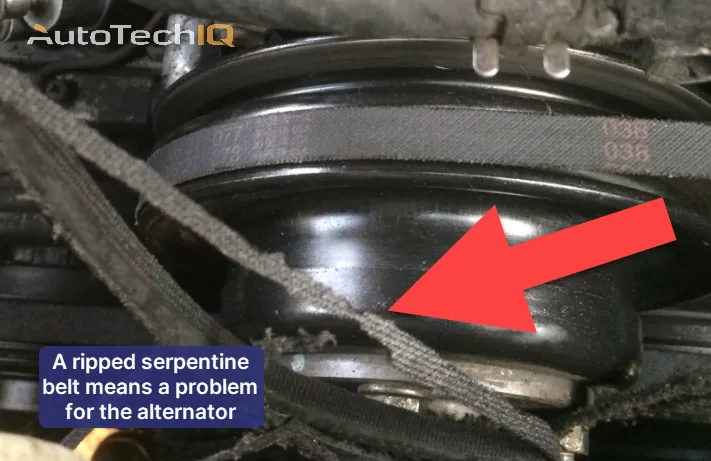
Can you jumpstart a car with a bad alternator?
Yes, but it's only temporary. Also, make sure the battery isn't frozen or it won't work. Ideally, once the engine is running, the alternator starts recharging the battery. But, if the alternator is faulty, the battery won't receive any power, meaning the vehicle will stall again shortly. So, while a jumpstart can get you moving, it's not a long-term solution.
How long do alternators last?
They typically last between 80,000 to 150,000 miles (about 130,000 to 240,000 kilometers). Still, it can vary depending on driving conditions, the vehicle's electrical system, and maintenance. It's fairly easy for mechanics to spot if an issue is developing in the alternator if they inspect the charging system. Plus, replacing worn-out components, like bearings or brushes, can extend the alternator's lifespan.
What does the alternator warning light indicate?
The alternator warning light (battery-shaped), warns about issues with the charging system. When this light pops while the engine is running, it probably means an issue with the alternator or related components. But, it can also be loose or damaged belts or a faulty voltage regulator.
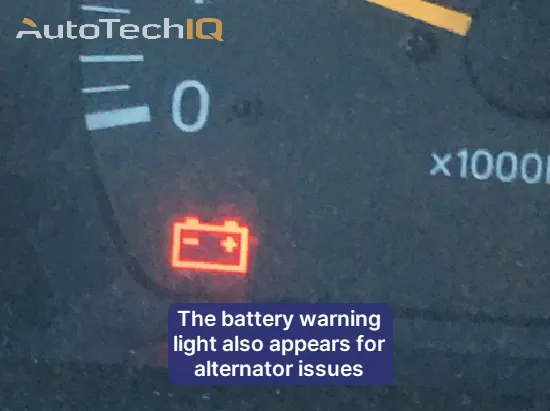
Will a bad alternator drain a battery when the car is off?
It can. Certain alternator issues can cause a parasitic drain on the battery. The alternator typically recharges the battery and other electrical accessories while the engine is running. So, if somehow an internal component, like diodes, gets a short-circuit, it can consume battery even while the car is off.
What are the symptoms of a bad alternator?
Dimming Headlights: Headlights appear dimmer than usual; this commonly happens because of low power, often due to a weak alternator not meeting the vehicle's electrical needs.
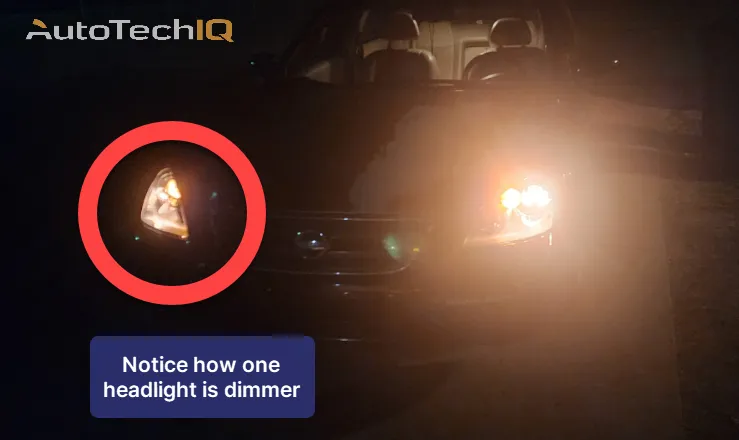
Dashboard Warning Light (Battery Symbol): The light pops up when the alternator is not charging the battery properly, meaning an issue with the charging system.
Difficulty Starting: Low power from a failing alternator can lead to difficulty starting the engine, as the battery lacks the needed charge.
Electrical System Malfunctions: Many electrical components, like power windows or the radio, might act weirdly or stop working altogether because of a bad power supply from the alternator.
Strange Noises: Weird grinding or whining noises from the alternator might mean internal problems like worn-out bearings. Plus, wiring noises from your AM radio is also a sign.
How a proper auto shop helps customers
An alternator service is different from vehicle to vehicle; it depends on the issue and root causes. However, top-tier educational auto shops explain to customers everything about their vehicle's issues and condition.
To illustrate good auto shop service on alternators, we'll tell a story based on true events.
Inspection: Mike, a technician, uses inspection images of various alternator components and points out specific things to the car owner. He explains each component and shows any odd things he spotted in the charging system. Then, he discusses how a working alternator is important for powering the vehicle's electrical systems and keeping a healthy battery.
Test: After the visual inspection, Mike starts testing. He starts checking the output voltage of the alternator and compares it to the manufacturer's specifications. Then, he explains to the customer the testing process, going through the methods and results.
Evaluate: Mike explains all issues found in the alternator, clarifying the downsides of each. He discusses the potential causes of the issues, like worn-out brushes, faulty voltage regulators, or damaged bearings. He uses the inspection images to make it clearer for the customer.
Diagnose: Having diagnosed the problem, Mike explains the planned repairs and the need for timely action. He breaks down the costs involved, making a transparent report to the customer.
Confirm Repair: Once the car owner approves the service, Mike and his team proceed with the repairs. They constantly update the customer about the service's progress, sharing images and videos of the replacements. They make sure the images are easy to understand, with text and arrows if needed.
Five common causes for alternator issues
Worn-out Brushes
Brushes, conduct electrical current within the alternator. They can wear over time, lowering the charging capacity, and resulting in dimming headlights and weak electrical performance.
Faulty Voltage Regulator
A bad voltage regulator can overcharge or undercharge the battery, resulting in dashboard warning lights and battery damage.
Damaged Bearings
Worn or damaged bearings inside the alternator make grinding or whining noises, which is quite easy to hear.
Slipping or Damaged Belt
A slipping or damaged alternator belt won't turn the rotor as fast, resulting in lower power generation. This commonly causes dimming lights and stalling.
Internal Mechanical Issues
Internal mechanical problems, like a faulty rotor or stator, can mess with the generation of electrical power. This usually leads to charging system failure and a need for alternator replacement.
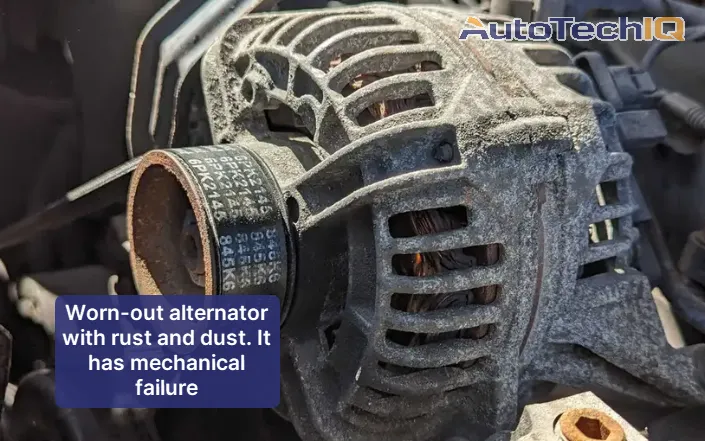
Most common alternator fixes
Brush Replacement
Installing new brushes restores the electrical conductivity within the alternator, ensuring optimal charging performance and preventing symptoms like dimming headlights.
Voltage Regulator Replacement
Swapping out a faulty voltage regulator stabilizes charging, preventing overcharging or undercharging, and mitigates issues signaled by dashboard warning lights. In modern vehicles, their own computers determine the voltage regulation.
Bearing Replacement
Replacing worn or damaged bearings eliminates abnormal noises, such as grinding or whining, ensuring smooth alternator operation and preventing imminent failure.
Belt Replacement
Installing a new alternator belt restores proper tension and rotation, preventing slipping or damage, and ensures consistent power generation, avoiding dimming lights and stalling.
Alternator Overhaul or Replacement
A comprehensive overhaul or replacement addresses internal mechanical issues, ensuring the alternator's proper function and preventing total charging system failure. In many cases, a shop will recommend getting a new alternator unit.
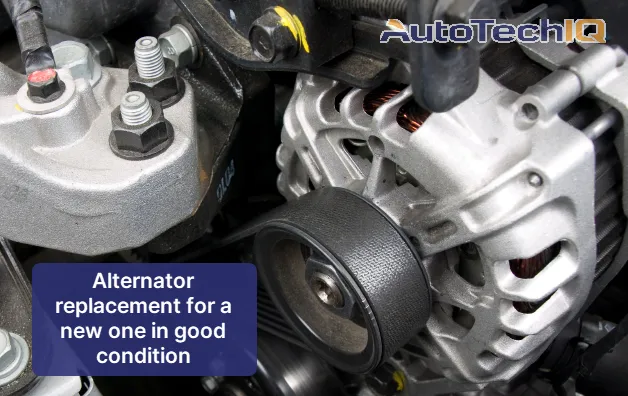
Summary
This article discusses the alternator, which is part of a vehicle's charging system. The discussions explain the alternator's role, alternator issues, symptoms, problem causes, and common fixes. The article describes the top causes deeply, from worn brushes to damaged bearings, providing a breakdown of each. Readers gain insights into the diagnostic process, illustrated with inspection images, and learn the top fixes, including brush and belt replacements. This comprehensive guide demystifies alternator problems, offering clarity and actionable knowledge for informed vehicle maintenance.
There's an auto shop near you delivering fair, transparent service like you've read here.
Feel free to visit our 'Shop Near You' page and search for our certified repair shops in your area. These businesses provide top-notch services and expert inspections using advanced diagnostic tools. You'll witness the same level of care and attention to detail highlighted in this article. These shops share our goal of ensuring your vehicle receives the best possible maintenance. At this goal's core, your knowledge of what's happening to your car and how to maintain it is our #1 priority.






